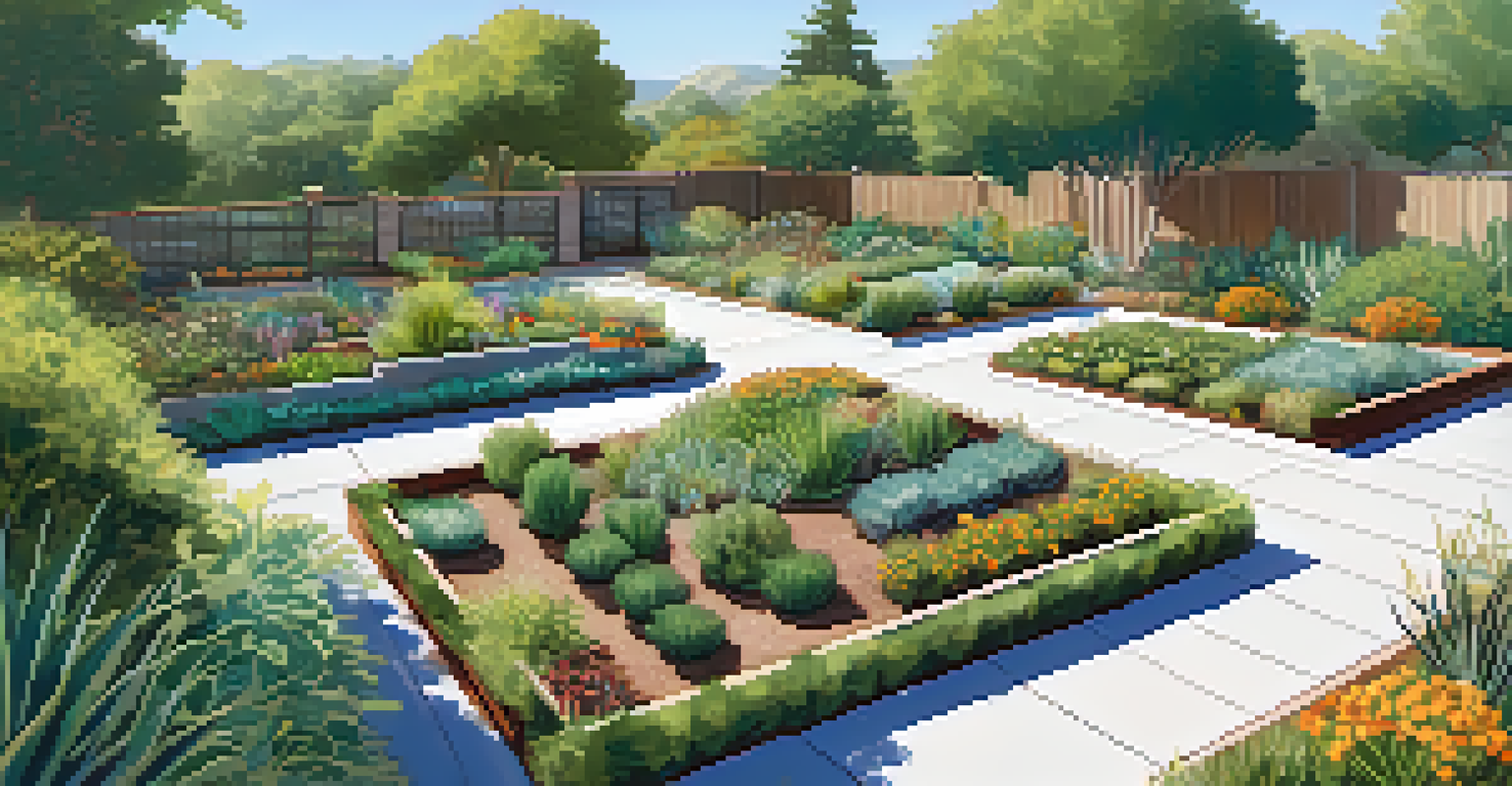How to Create a Drought-Resistant Garden in Santa Barbara

Understanding Santa Barbara's Climate and Water Needs
Santa Barbara has a Mediterranean climate, characterized by dry summers and mild winters. This unique weather pattern means that understanding local conditions is essential for any gardener. Water conservation is crucial here, as drought conditions can lead to restrictions that impact plant health.
The best time to plant a tree was 20 years ago. The second best time is now.
The region receives most of its rainfall during winter months, which means that plants need to be resilient enough to withstand dry spells. By choosing the right plants and adopting efficient watering practices, you can create a garden that not only survives but thrives.
Recognizing your garden's microclimates—areas that may have different sun exposure or wind patterns—will also play a significant role. This knowledge will help you select the best drought-resistant plants suited for those specific conditions.
Choosing Drought-Resistant Plants for Your Garden
Selecting the right plants is one of the most important steps in creating a drought-resistant garden. Native plants, like California poppies and lavender, are not only beautiful but also adapted to local conditions, making them excellent choices. These plants typically require less water and are more resistant to pests and diseases.

In addition to native species, consider drought-tolerant varieties of popular plants. For example, succulents and cacti store water in their leaves, allowing them to survive long periods without rainfall. Incorporating a mix of textures and colors from these plants can create a vibrant and dynamic landscape.
Embrace Drought-Resistant Plants
Choosing native and drought-tolerant plants can significantly reduce water needs while creating a vibrant garden.
Don’t forget to group plants with similar water needs together. This practice, known as hydrozoning, minimizes water waste and makes irrigation more efficient. It’s like creating a little community of plants that support each other in their water needs.
Designing Your Drought-Resistant Garden Layout
A well-thought-out garden layout can significantly reduce water consumption while enhancing visual appeal. Start by mapping out your space, noting sun and shade areas, to help you place your plants accordingly. This way, sun-loving plants get their fill of sunshine, while shade-tolerant ones can thrive in cooler spots.
In every walk with nature one receives far more than he seeks.
Consider incorporating hardscaping elements like gravel pathways or decorative stones. These not only add aesthetic value but also reduce the amount of soil exposed to the sun, which can help retain moisture. Additionally, raised beds can provide better drainage and improve soil health.
Don't shy away from adding features like mulch, which can help retain moisture and suppress weeds. A well-placed layer of mulch around your plants can keep the soil cool and reduce evaporation, making your garden more resilient during the hot months.
Implementing Efficient Watering Techniques
When it comes to watering, efficiency is key. Drip irrigation systems are a fantastic choice for drought-resistant gardens, delivering water directly to the plant roots where it's needed most. This method minimizes evaporation and runoff, making every drop count.
Timing your watering is equally important. Early morning or late afternoon is ideal, as temperatures are cooler, reducing evaporation. Watering during these times allows your plants to absorb moisture without wasting it to the sun’s heat.
Efficient Watering Techniques Matter
Implementing drip irrigation and timing your watering can maximize efficiency and minimize water waste.
Incorporating rainwater harvesting techniques can also be beneficial. Collecting rainwater in barrels during the wetter months provides a sustainable source of irrigation for your garden when the dry spells kick in.
Maintaining Your Drought-Resistant Garden
Maintenance is essential for keeping your drought-resistant garden thriving. Regular checks for pests and diseases can help you catch potential issues before they escalate. A proactive approach ensures your plants remain healthy and resilient.
Pruning and deadheading are important tasks that promote new growth and improve airflow around your plants. This not only enhances their appearance but also helps them utilize water more efficiently. Think of it as giving your plants a fresh haircut to keep them looking sharp.
Lastly, don’t forget about soil health. Amending your soil with organic matter can improve its water-holding capacity. Healthy soil is the foundation of a successful garden, ensuring that your plants get the nutrients they need while reducing the need for excessive watering.
Incorporating Hardscaping Elements for Beauty and Function
Hardscaping is an often-overlooked aspect of gardening, but it can play a vital role in a drought-resistant landscape. Features like stone walls, patios, and pathways can not only define spaces but also help retain moisture in the soil. These elements create a beautiful contrast with your plants while minimizing water loss.
Consider using permeable materials for your hardscaping projects. This allows rainwater to seep through, replenishing the ground rather than running off. It’s a practical solution that works hand-in-hand with your garden's overall water conservation efforts.
Maintain Soil Health for Success
Regular maintenance and enriching soil with organic matter enhance water retention and support plant growth.
Incorporating seating areas and decorative features can also enhance your outdoor space. Think about adding benches or sculptures that complement the natural beauty of your plants, creating a serene environment where you can enjoy your thriving garden.
The Benefits of a Drought-Resistant Garden
Creating a drought-resistant garden offers numerous benefits beyond just conserving water. A well-planned garden can save you time and money on maintenance and water bills. Plus, it contributes positively to the environment by reducing the demand on local water resources.
Additionally, these gardens attract pollinators like bees and butterflies, promoting biodiversity. By fostering a healthy ecosystem, you're not only supporting your plants but also contributing to the overall health of your community.

Lastly, a drought-resistant garden can provide a sense of pride and accomplishment. Watching your garden flourish despite the challenges of climate change can be incredibly rewarding. It’s a testament to your efforts and commitment to sustainable gardening practices.